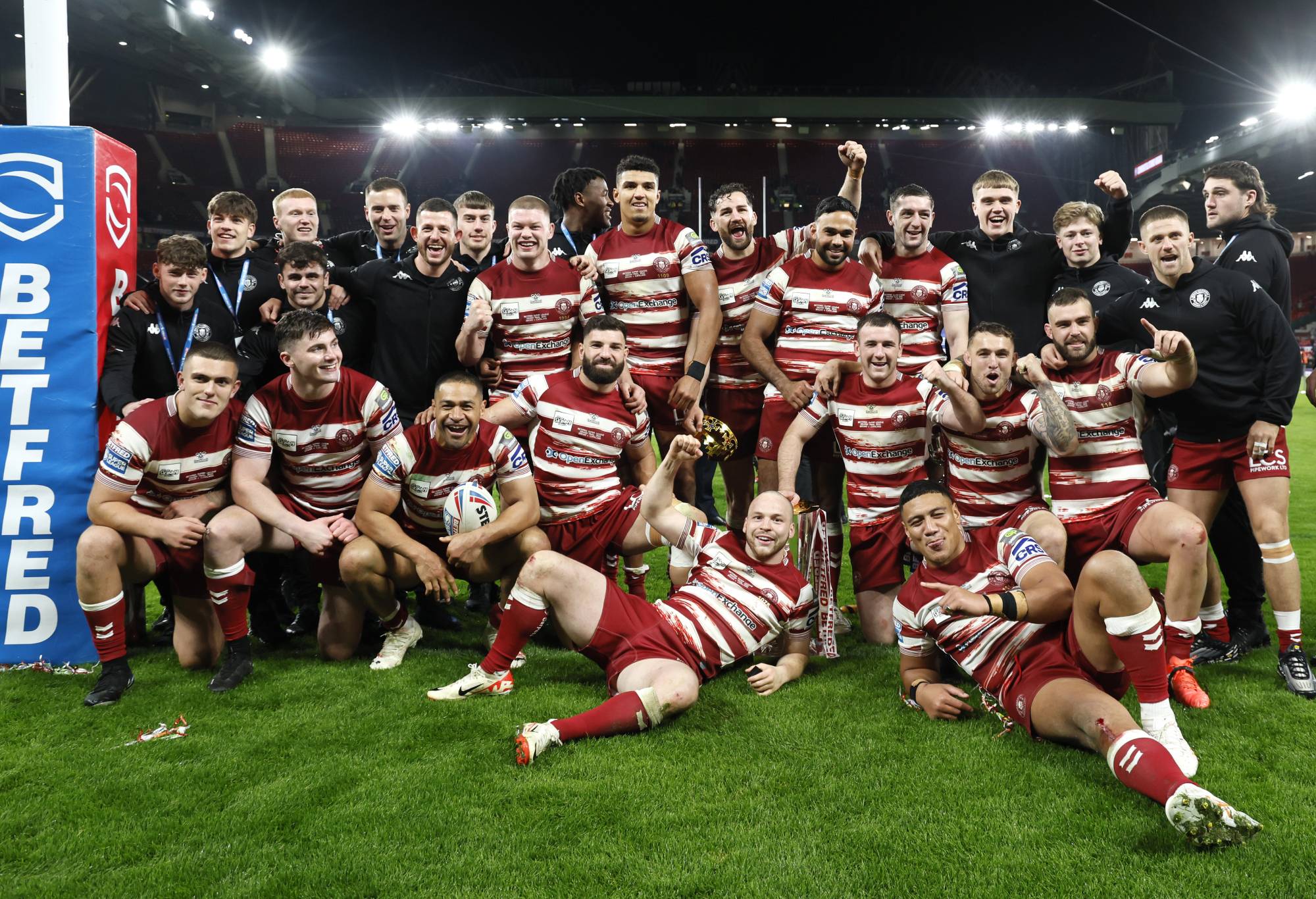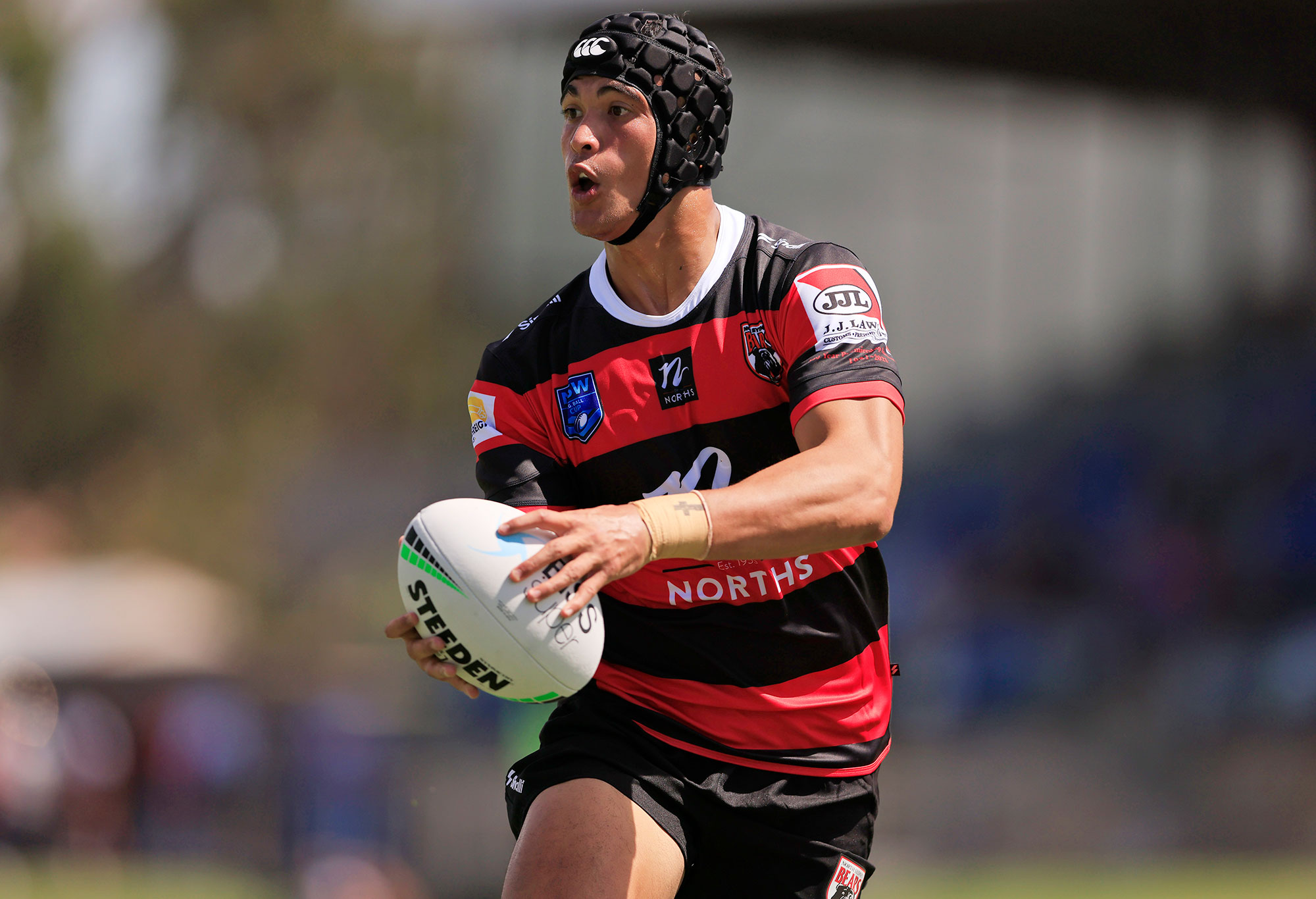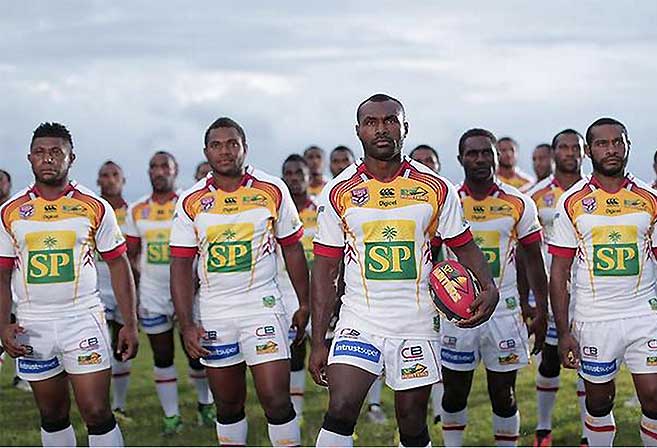The Bears might not be back, but they might be getting more airtime than they have at any point since departing first grade rugby league in 1999.
One week they’re in Perth, the next they’re in a non-specific part of the Pacific that might actually be in Cairns.
Peter V’landys said last week that they would return “in some capacity”; though they already exist in the capacity of a second grade side (and a very successful one at that) so it’s unclear what that means.
Panthers CEO Matt Cameron opined that they should be a travelling carnival that goes around the bush (charging two bits a gander) to revive country football, though that would involve a team with Country at the start insisting that they play multiple home games a year in the heart of inner city Sydney.
Justin Olam doesn’t care as long as they don’t call themselves Papua New Guinean while basing themselves out of Australia, which sounds about right, but again would look a little weird on the famously Kumul-dense Lower North Shore.
This isn’t to say that the Bears shouldn’t come back – indeed, perhaps the opposite.
If we’ve learned anything from the latest round of NRL expansion, it’s that established brands with good fanbases are a lot easier to integrate.
There is, however, a question of why the Bears are so prominent in the expansion narrative when they are far from the only team that have excelled in second grade, have a strong brand and could survive easily in the top grade, especially if a geographic shift is required.
The debate is currently raging in England, where the argument about who deserves to play in the Super League is as old as the competition itself.
Just before the Bears were kicked out in Australia, the Super League went through the same discussions around ‘rationalisation’ by trying to merge teams, which fans roundly rejected in favour of the promotion and relegation format.
Since 1996, 12 teams have played in the competition who are no longer in it – as many as currently are – including former powerhouses like Bradford, Wakefield and Widnes and expansion sides like the Crusaders, Paris and Toronto.
After sports marketing firm IMG invested in the comp in 2022, a major shake-up was announced, with the 12 teams who get to play in the Super League to be selected by a grading system that took in not only their on-field performance, as it was under pro/rel, but also off-field characteristics.

Wigan Warriors celebrate with the Super League trophy. (Photo by Richard Sellers/PA Images via Getty Images)
Clubs were assessed as follows: by how many fans they have, across the stadium, online, social media and watching on TV (five points); their on-field performance in terms of average league position over three years and with extras for Grand Final or Challenge Cup triumphs (also five points), their finances (4.5); their stadium and other facilities (3) and their catchment, which took in how many fans they had the potential to reach (2.5) based on local population and the number of other clubs nearby.
Leeds came out on top, with 17.49 of a potential 20 points, and the usual suspects of Wigan, Saints, Catalans, Warrington and the Hull clubs all were given A grades, which would guarantee Super League status almost permanently.
From place 8 (Salford) down to 24 (London), however, everyone was a Grade B and thus, theoretically, eligible to play Super League in 2025 but in direct competition, off the field as well as on it, with the other 16 teams for what will almost certainly be just four top tier spots.
The first edition, in 2023, was merely a guideline, but the second, due to be assessed over this year for next season, will directly influence who can and can’t participate in 2025 season.
That means, slightly farcically, that the newly promoted London Broncos, are essentially on a hiding to nothing all year as their ranking of 24th all but assures that they will not be maintained.
Toulouse, however, who lost to London in the Championship Grand Final, were listed as 10th on the IMG gradings and are thus in pole position to be promoted on off-field infrastructure alone.
It also means that some clubs, like Salford and Castleford, would probably be better off not investing in their squads in 2024 and instead spending first team budget on other aspects of the business which have a better chance of impressing IMG.
There’s a strong argument that this is the sort of thing they should have been doing all along, of course, and that the constant drive just to finish 11th and not get relegated was what was holding plenty of clubs back from ever kicking on further up the league.

Joseph Suaalii (Photo by Mark Evans/Getty Images)
A system like IMG’s is probably not a million miles away from what the powers-that-be are already doing in assessing who gets the 19th and 20th franchises to play in the NRL.
They, obviously, are not going to release a ranking, but it doesn’t stop us from speculating who might do very well under a similar five point criteria, or ranking where the Bears might fit into that.
On the fanbase part, there’s a strong argument they would be top of the pile.
While the 200,000 fans line that has been trumpeted probably comes will a little embellishment, there are a lot of Bears fans out there from back in the day.
In the stadium, however, they’d be behind Newtown, who the best supported standalone team in the NSW Cup (though not to the level of the 8,972 they jokingly announce each week) and while Queensland Cup sides don’t regularly publish attendances, it would be surprising if several sides, not least the PNG Hunters, don’t get close to the numbers who rock up to Bear Park.
On Twitter, too, they trail the Bluebags and on Facebook, they’re well behind the Hunters, who have a mammoth 68,000 fans.
On the field, the Bears were Minor Premiers last year but lost to Souths in the Grand Final, whereas Newtown won in 2019 – just about in the recording period of three seasons, given Covid calloffs – and North Devils and Easts Tigers, both from Brisbane, have picked up Q Cup titles.
Finances get very interesting indeed. The Bears are still linked to the Norths group, but they are far from alone in having that sort of backing – plenty of clubs in Queensland could boast it – and in any event, a theoretical standalone in Perth or New Zealand could trump them on potential revenue, or a PNG option with the potential huge investment from central government.

The stadium is a non-starter, because nobody proposes that they use North Sydney Oval as anything other than a heritage location, but the catchment is certainly interesting in the sense that Perth, PNG and New Zealand have huge ties to local areas that exist with or without the Bears, who are themselves a base for other NRL clubs’ juniors.
If the IMG criteria were applied, one could make just as strong an argument for Newtown being the branding vehicle to give a new franchise old cache, and that still would lag behind the well-established, high potential PNG Hunters or the pre-existing Western Reds/West Coast Pirates branding.
That said, brand is all about perception, and there’s a reason we keep talking about the Bears all the time. Much as the club has gone away, the dream hasn’t, at least in the media.
The idea of a club that re-engages with one of Sydney’s wealthiest areas while actually existing somewhere else as a viable football concern is a dream that doesn’t die for a reason.
‘Bring back the Bears’ is a good enough slogan that it has persevered across decades and, if we’re being honest, a bit of logic.
It’s hard to draw a counterfactual for what a Perth Bears might be versus a native, Western Australian branding, but it will be up to the NRL to decide who new club exists for, or if they can have their cake and eat it.
It would be highly ironic for the most geographically-specific expansion possible – hint, you can see their well-funded Leagues Club on the TV coverage – not to be tied to anywhere but for a very niche local brand to move to the other side of the country and take their name, but you wouldn’t count it out.
The idea might be so mad that it actually works.































































































